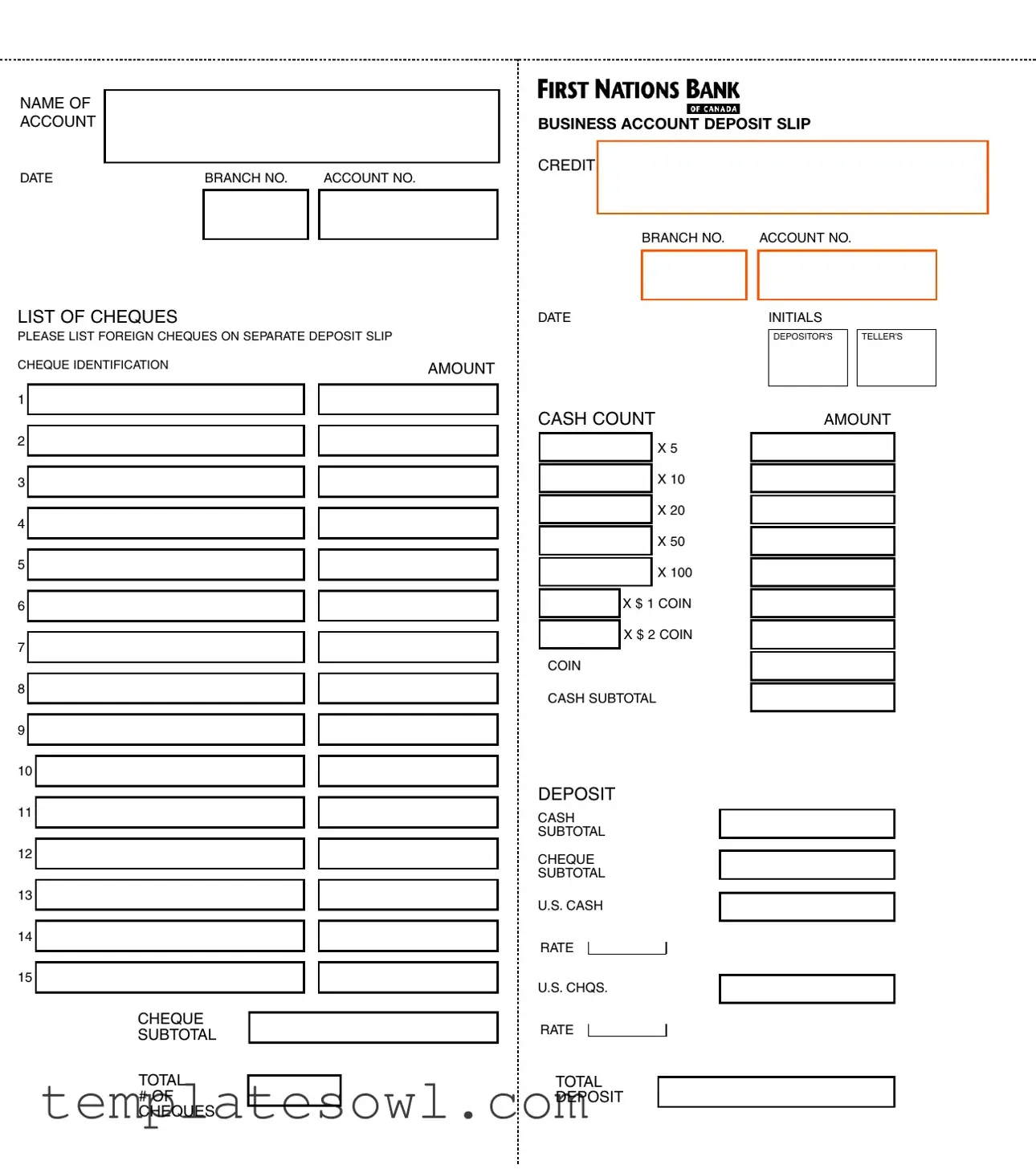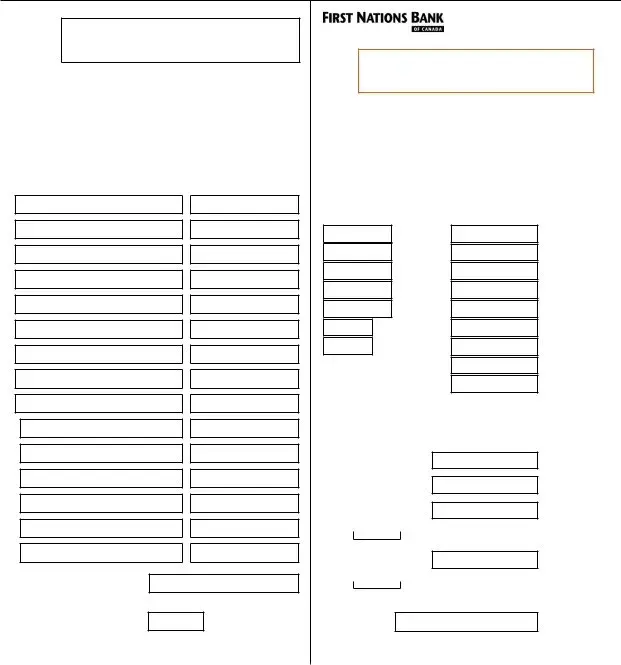What is a Canada Deposit Slip?
A Canada Deposit Slip is a form that individuals or businesses use to deposit funds into their bank accounts in Canada. It lists the details of the deposit, including cash and cheques, to ensure accurate processing by the bank. This form helps keep your records straight and provides a clear breakdown of your deposit.
Where can I obtain a Canada Deposit Slip?
You can typically find Canada Deposit Slips at your local bank branch. Additionally, many banks allow customers to download the form from their official website. It's a good idea to keep a few extra slips on hand for future deposits.
What information do I need to fill out on the deposit slip?
You'll need to provide several key pieces of information. Begin with your account name and number. You'll also enter the date, branch number, and details of the cheques you are depositing. For each cheque, include a brief identification and the amount. If you have cash to deposit, make sure to include the cash count as well.
Can I deposit foreign cheques using a Canada Deposit Slip?
Yes, you can deposit foreign cheques, but you need to use a separate deposit slip for these. The process for foreign cheques may differ, so be sure to check with your bank for specific instructions regarding fees and processing times.
What should I know about cheque identification?
Cheque identification allows you to track and reference the cheques you're depositing. You need to provide a brief description for each cheque, which could include the cheque number or the name of the issuer. This helps ensure that your account is credited accurately.
How do I total my deposits on the slip?
The slip provides separate sections for cash and cheque sub-totals. After listing all your deposits, simply add the amounts together to calculate the total deposit. It's crucial to double-check your math to ensure everything matches what you expect to see in your account.
What are the cash count denominations I need to be aware of?
The cash count section will typically ask you to report various denominations, such as $1, $5, $10, $20, $50, and $100 bills. There is also space to record any coins that you may be depositing, like $1 and $2 coins. Being thorough here helps ensure an accurate total.
What if I make a mistake on my deposit slip?
If you make an error, it’s best to start a new slip to avoid confusion. Cross out the mistake clearly and write the correct information right next to it. However, if using a new slip isn't feasible, ensure to explain the mistake to your teller, who can assist you further.
How do I know if my deposit has been successful?
Once you submit your deposit slip, you should receive a receipt from the teller, acknowledging your deposit. Keep this receipt for your records. Usually, you can also check your account balance online or via your bank’s app to confirm that the funds were credited properly.

